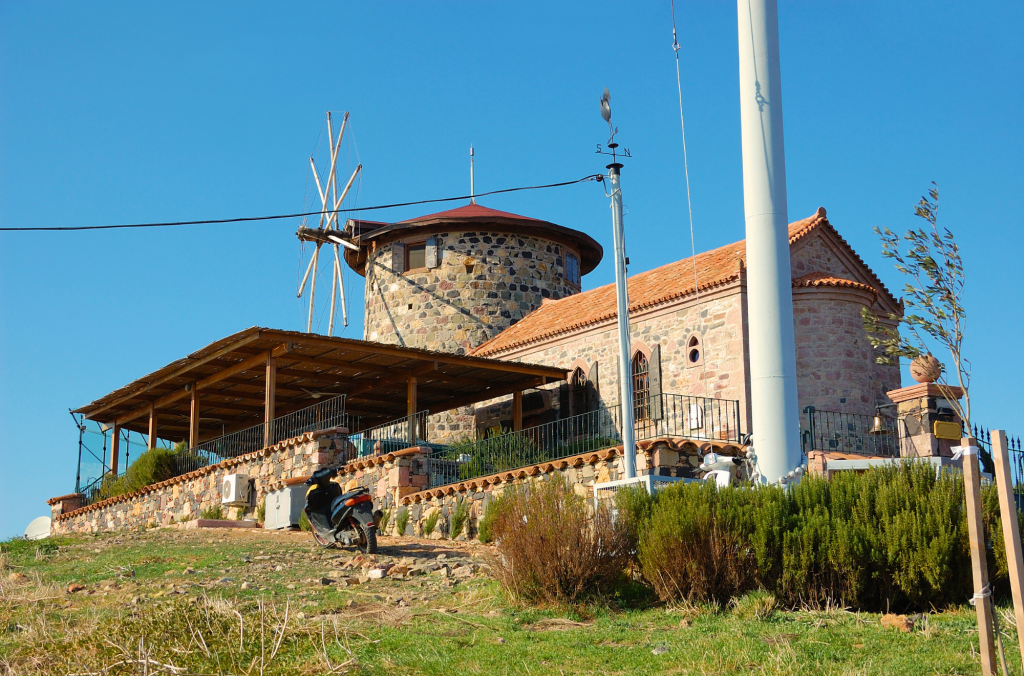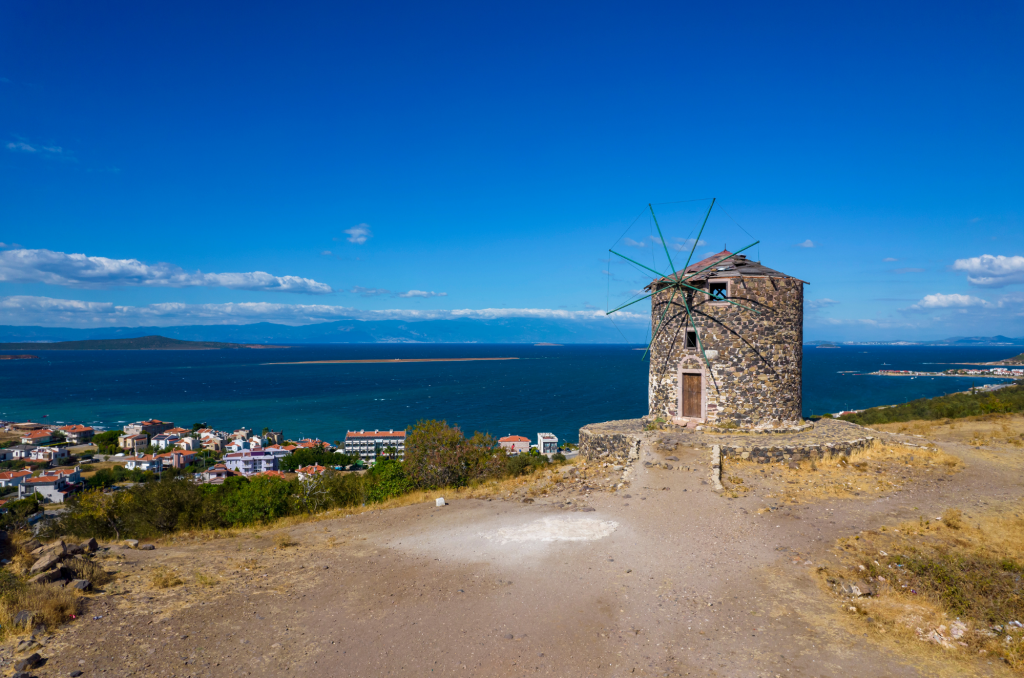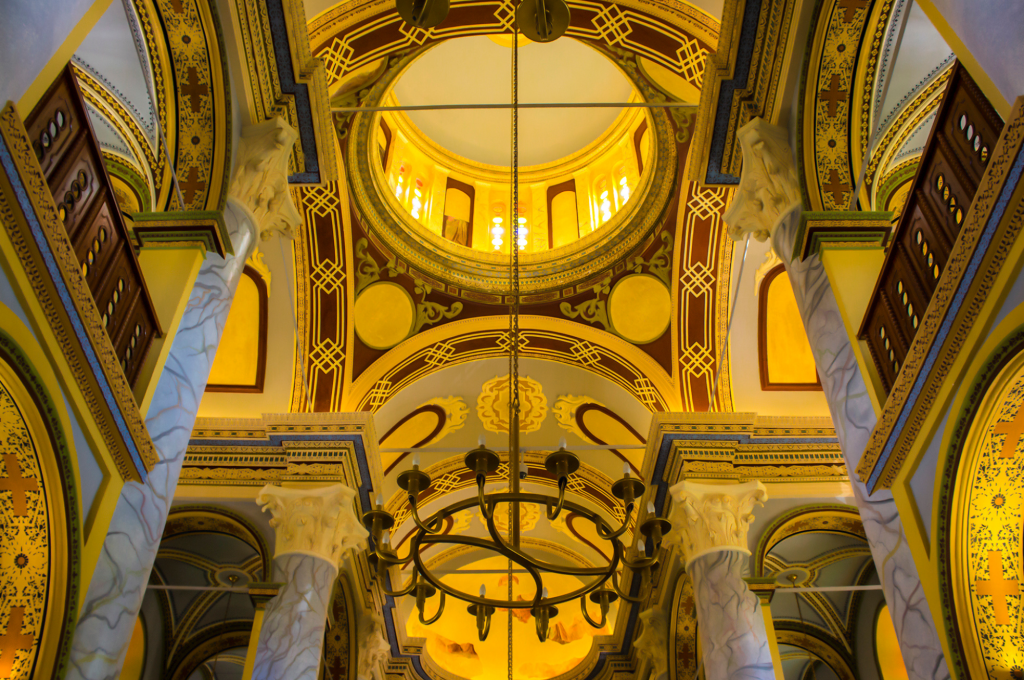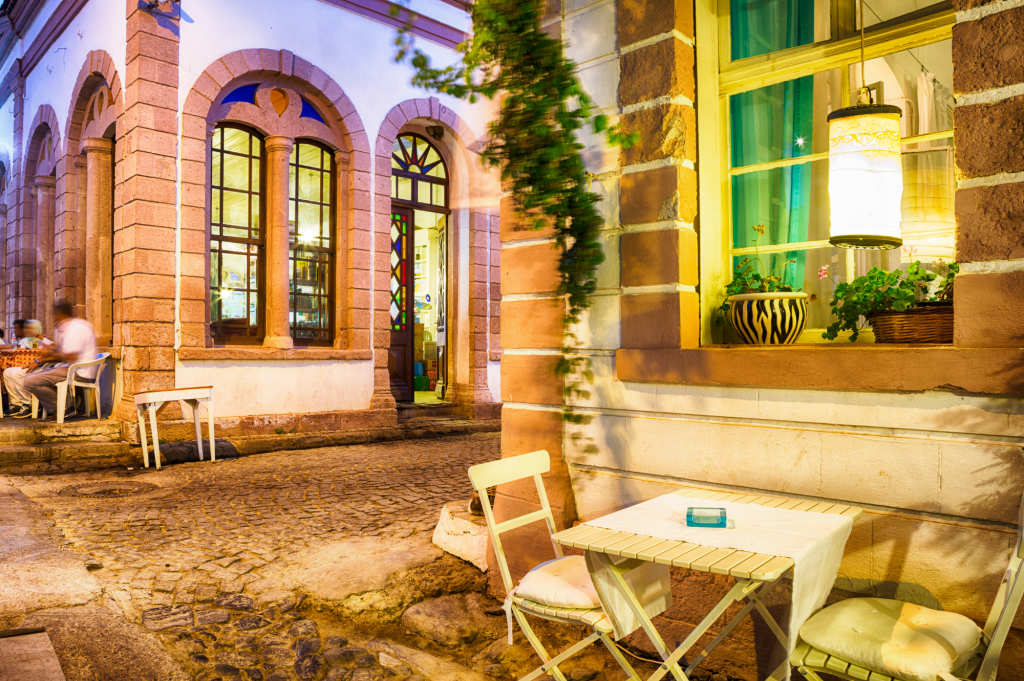Places to Visit in Cunda Island | Cunda Itinerary
Cunda Island, part of Ayvalık, one of the gems of the Aegean, continues to enchant its visitors with its natural beauty, historical texture, and unique cultural heritage. Among the “places to visit in Cunda Island,” there are many spots waiting to be discovered, from historical churches to breathtaking views, narrow stone streets to fragrant olive groves. In this article, you will discover the island’s most important tourist attractions and activities you should do, finding tips about the magical atmosphere of Cunda. If you’re ready, let’s start exploring the hidden treasures of Cunda Island together.
Sevim and Necdet Kent Library

Sevim and Necdet Kent Library is a library located on Cunda Island with both historical and cultural significance. The Rahmi M. Koç Museum and Culture Foundation restored and converted the building, formerly known as the Ayos Yannis Church, into a library in 2007. They opened the library in memory of Rahmi M. Koç’s mother, Sevgi Gönül, and named it after Necdet Kent and his wife Sevim Kent. The library offers visitors the opportunity to read and research with its rich book collection. Additionally, due to its location, it offers unique views of Cunda Island. With its historical and cultural texture, the library is one of the must-see places on Cunda Island, especially for literature and history enthusiasts.
Cunda Windmill

Cunda Windmill is a historical and touristic structure located on Cunda Island. Positioned at a high point on the island, this windmill offers both historical heritage and stunning views. They have restored the windmill and reopened it to visitors. The Cunda Windmill is also located close to the Sevim and Necdet Kent Library. This region is especially popular for watching the sunset. Visitors can climb up to the windmill to enjoy the magnificent views of Ayvalık and Cunda.
Rahmi M. Koç Museum

Opened in 2011, the museum was established by the Rahmi M Koç Museum and Culture Foundation and is located in the Taksiyarhis Church. This church, built in 1873 and restored to be converted into a museum, is constructed in Neo-Classical style. The museum focuses on themes of industry, transportation, and communication. Inside, there are various collections related to maritime, aviation, railways, and automobiles. The museum exhibits a wide range of objects, including model ships, classic cars, motorcycles, scientific instruments, and toys.
Tas Kahve

Taş Kahve is one of the most iconic and historical places on Cunda Island. Built in 1871, this coffee house is located in the center of the island, along the coast. The venue offers a spacious environment with its wide and high-ceilinged structure. Inside, there are wooden tables and chairs, historical photographs, and antique objects. Here, you can taste the unique flavors of the Aegean, especially enjoying mastic-flavored coffee and mastic cookies. Additionally, freshly brewed tea, lemonade, and other hot and cold beverages are also available. The large seating area in front of the venue is ideal for spending pleasant moments with a sea view.
Cunda Despot House

Despot House, which holds an important place among the places to visit on Cunda Island, is one of the island’s historical and architectural riches. Built in the 19th century, the building was used as the residence of one of the island’s Greek Orthodox leaders, the Despot. Despot House stands out with its neoclassical architecture, elegant stone craftsmanship, and ornate details. Over time, the house fell into disrepair but was restored by the Rahmi M. Koç Museum and Culture Foundation and brought back to life. Today, it is open to visitors as an important monument reflecting the history and cultural heritage of Cunda Island. The house’s high location offers breathtaking views of Ayvalık and its surroundings, making it an ideal spot for photography enthusiasts.
There are also articles about Ayvalık on Gezgin Penguen. I definitely recommend checking them out. I wish you a great trip in advance!